PATIENT EDUCATION MATERIALS
Below are some examples of free or inexpensive handouts from organizations that CHAMPS recommends for content and
cultural sensitivity. Contact the specific organization with any questions about using the materials.
Feel free to explore each organization’s website to find more!
THE FOLLOWING HANDOUTS ARE SORTED INTO THE TOPICS REQUIRED TO BE
ADDRESSED IN STEP 3 AND STEP 5 OF THE
PRENATAL HANDOUTS (STEP 3)
- “A Guide to Breastfeeding”
- “Breastfeeding: A Gift That Lasts a Lifetime” page 2
- Download pdf
- School Grade Reading Level: 7.4
- Source: CA Dept of Public Health WIC
- “Breastfeeding… For My Baby. For Me”
- “Breastfeeding is Important”
- This topic is covered on page 1
- Download pdf
- School Grade Reading Level: 6
- Source: NY Dept of Health WIC
- “Formula Compared to Breastmilk”
- Download pdf
- School Grade Reading Level: 3
- Source: CA Dept of Public Health WIC
- “Prenatal Breastfeeding Education”
- This topic is covered on pages 2-5 & 18-19
- Download pdf
- School Grade Reading Level: 7.4
- Source: Dignity Health Women’s Services
- “Ready, Set, Baby”
- “Exclusive Breastfeeding” page 10
- Download pdf
- School Grade Reading Level: 4.7
- Source: Carolina Global Breastfeeding Institute
- “Your Guide to Breastfeeding for African American Women”
- “Why Breastfeeding is Important”
- This topic is covered on pages 4 & 5
- Download pdf
- School Grade Reading Level: 7.6
- Source: Office on Women’s Health: It’s Only Natural
- “Comfort in Labor”
- Download pdf
- School Grade Reading Level: 10.4
- Source: Childbirth Connection
- “Maintaining Freedom of Movement”
- Download pdf
- School Grade Reading Level: 5.5
- Source: Mother’s Advocate/InJoy
- “Prenatal Breastfeeding Education”
- This topic is covered on pages 9-10
- Download pdf
- School Grade Reading Level: 7.4
- Source: Dignity Health Women’s Services
- “Positions for Labor”
- Download pdf
- School Grade Reading Level: 7.2
- Source: Mother’s Advocate/InJoy
- “Relaxation Basics”
- Download pdf
- School Grade Reading Level: 4
- Source: International Childbirth Education Association
- “A Guide to Breastfeeding”
- “Getting Off to a Great Start” page 1
- Download pdf
- School Grade Reading Level: 7.4
- Source: CA Dept of Public Health WIC
- “Breastfeeding… For My Baby. For Me”
- “Birth and Breastfeeding”
- This topic is covered on page 2
- Download pdf
- School Grade Reading Level: 6
- Source: NY Dept of Health WIC
- “Breastfeeding in the Hospital”
- Download pdf
- School Grade Reading Level: 8.2
- Source: Lactation Education Resources
- “It’s My Birthday, Give Me a Hug!”
- Download pdf
- School Grade Reading Level: 4.5
- Source: Massachusetts Breastfeeding Coalition
- “Keep Your Baby With You – It’s Best For You, Your Baby, and Breastfeeding”
- Download pdf
- School Grade Reading Level: 10.4
- Source: Mother’s Advocate/InJoy/Lamaze International
- “Prenatal Breastfeeding Education”
- “Early Skin-to-Skin Contact” pages 11 & 12
- Download pdf
- School Grade Reading Level: 7.4
- Source: Dignity Health Women’s Services
- “Ready, Set, Baby”
- “Skin-to-Skin Contact” page 7
- Download pdf
- School Grade Reading Level: 4.4
- Source: Carolina Global Breastfeeding Institute
- “Tips for the Feeding in Delivery”
- Request Access to Download pdf
- School Grade Reading Level: 6
- Source: Lactation Education Resources
- “A Guide to Breastfeeding”
- “Getting Off to a Great Start” page 1
- Download pdf
- School Grade Reading Level: 7.4
- Source: CA Dept of Public Health WIC
- “Breastfeeding… For My Baby. For Me”
- “Birth and Breastfeeding”
- This topic is covered on page 2
- Download pdf
- School Grade Reading Level: 6
- Source: NY Dept of Health WIC
- “My Guide to Working and Breastfeeding”
- Download pdf
- School Grade Reading Level: 1.8
- Source: Breastfeeding Coalition of Washington
- “Tips for the Feeding in Delivery”
- Request Access to Download pdf
- School Grade Reading Level: 6
- Source: Lactation Education Resources
- “Your Guide to Breastfeeding for African American Women”
- Learning to Breastfeed”
- This topic is covered on page 12
- Download pdf
- School Grade Reading Level: 9.4
- Source: Office on Women’s Health: It’s Only Natural
- “Breastfeeding… For My Baby. For Me”
- “Birth and Breastfeeding”
- This topic is covered on page 2
- Download pdf
- School Grade Reading Level: 6
- Source: NY Dept of Health WIC
- “Breastfeeding in the Hospital”
- Download pdf
- School Grade Reading Level: 8.2
- Source: Lactation Education Resources
- “Keep Your Baby With You – It’s Best For You, Your Baby, and Breastfeeding”
- Download pdf
- School Grade Reading Level: 10.4
- Source: Mother’s Advocate/InJoy/Lamaze International
- “Prenatal Breastfeeding Education”
- “Rooming In” page 13
- Download pdf
- School Grade Reading Level: 7.4
- Source: Dignity Health Women’s Services
- “Ready, Set, Baby”
- “Rooming-In” page 8
- Download full pdf
- School Grade Reading Level: 4.9
- Source: Carolina Global Breastfeeding Institute
- “Rooming In”
- Download pdf
- School Grade Reading Level: 5.7
- Source: Sutter Medical Center, Sacramento
- “Tips for the Feeding in Delivery”
- Request Access to Download pdf
- School Grade Reading Level: 6
- Source: Lactation Education Resources
- “A Guide to Breastfeeding”
- “Breastfeeding Questions & Answers” page 6-8
- Download pdf
- School Grade Reading Level: 7.4
- Source: CA Dept of Public Health WIC
- “Breastfeeding in the Hospital”
- Download pdf
- School Grade Reading Level: 8.2
- Source: Lactation Education Resources
- “Responsive Feeding”
- Download pdf
- School Grade Reading Level: 11
- Source: American Academy of Pediatrics: Healthychildren.org
- “Infant Hunger Cues”
- Download pdf
- School Grade Reading Level: 5.2
- Source: Lactation Education Resources
- “Newborn Feeding Log”
- Download pdf
- School Grade Reading Level: 0
- Source: Lactation Education Resources
- “Prenatal Breastfeeding Education”
- This topic is covered on pages 14, 15, and 26
- Download full pdf
- School Grade Reading Level: 7.4
- Source: Dignity Health Women’s Services
- “Ready, Set, Baby”
- “Feeding ‘On Cue'” page 9
- Download pdf
- School Grade Reading Level: 4.9
- Source: Carolina Global Breastfeeding Institute
- “Your Guide to Breastfeeding for African American Women“
- “Learning to Breastfeed”
- This topic is covered on page 12
- Download pdf
- School Grade Reading Level: 9.4
- Source: Office on Women’s Health: It’s Only Natural
- “A Guide to Breastfeeding”
- “Breastfeeding Questions & Answers” page 6
- Download pdf
- School Grade Reading Level: 7.4
- Source: CA Dept of Public Health
- “Prenatal Breastfeeding Education”
- “Feeding on Cue” pages 14-15
- Download pdf
- School Grade Reading Level: 7.4
- Source: Dignity Health Women’s Services
- “Your Guide to Breastfeeding for African American Women“
- “Making Plenty of Milk”
- This topic is covered on page 18
- Download pdf
- School Grade Reading Level: 9.4
- Source: Office on Women’s Health: It’s Only Natural
- “A Guide to Breastfeeding”
- “Finding Comfortable Positions” pages 6-8
- Download full pdf
- School Grade Reading Level: 7.4
- Source: CA Dept of Public Health WIC
- “Breastfeeding… For My Baby. For Me”
- “Positions” & “Latch”
- This topic is covered on pages 18-20
- Download pdf
- School Grade Reading Level: 6
- Source: NY Dept of Health WIC
- “Checklist for Positioning and Latch”
- Download pdf
- School Grade Reading Level: 0
- Source: Lactation Education Resources
- “The Importance of Latch-On”
- Download pdf
- School Grade Reading Level: 7.3
- Source: Lactation Education Resources
- “Mother’s Guide to Breastfeeding”
- ”Latching On” & “Popular Breastfeeding Positions”
- This topic is covered on pages 6-11
- Download pdf
- School Grade Reading Level: 6.2
- Source: New York City Department of Health
- “Prenatal Breastfeeding Education”
- “Breastfeeding – Latch and Positioning” pages 6-8
- Download full pdf
- School Grade Reading Level: 7.4
- Source: Dignity Health Women’s Services
- “Positioning and Latch-On: Mother-Led Latching”
- Download pdf
- School Grade Reading Level: 6.4
- Source: Lactation Education Resources
- “Ready, Set, Baby”
- “Position and Latch” pages 12 & 13
- Download pdf
- School Grade Reading Level: 4.9
- Source: Carolina Global Breastfeeding Institute
- “Signs of a Good Feeding”
- Download pdf
- School Grade Reading Level: 6.2
- Source: Lactation Education Resources
- “Signs of Good/Poor Feedings”
- Download pdf
- School Grade Reading Level: 4.2
- Source: Lactation Education Resources
- “Your Guide to Breastfeeding for African American Women“
- “Bringing Your Baby to Your Breast”, “Signs of a Good Latch”, “Help with Latch Problems”, & “Breastfeeding Holds”
- This topic is covered on pages 12-14
- Download pdf
- School Grade Reading Level: 9.4
- Source: Office on Women’s Health: It’s Only Natural
- “A Guide to Breastfeeding”
- “Breastfeeding: A Gift That Lasts a Lifetime” page 2
- Download full pdf
- School Grade Reading Level: 7.4
- Source: CA Dept of Public Health WIC
- “Infant Feeding Guide”
- “Introducing Complementary Foods” page 15
- Download full pdf
- School Grade Reading Level: 16.9
- Source: CA Dept of Public Health WIC
- “Information for Breastfeeding Families”
- “Weaning Your Breastfeeding Baby”
- Download full pdf
- School Grade Reading Level: 6.7
- Source: Lactation Education Resources
POSTPARTUM HANDOUTS (STEP 5)
- “A Guide to Breastfeeding”
- “Breastfeeding: A Gift That Lasts a Lifetime” page 2
- Download pdf
- School Grade Reading Level: 7.4
- Source: CA Dept of Public Health WIC
- “Breastfeeding… For My Baby. For Me”
- “Breastfeeding is Important”
- This topic is covered on page 1
- Download pdf
- School Grade Reading Level: 6
- Source: NY Dept of Health WIC
- “Formula Compared to Breastmilk”
- Download pdf
- School Grade Reading Level: 3
- Source: CA Dept of Public Health WIC
- “Prenatal Breastfeeding Education”
- This topic is covered on pages 2-5 & 18-19
- Download pdf
- School Grade Reading Level: 7.4
- Source: Dignity Health Women’s Services
- “Ready, Set, Baby”
- “Exclusive Breastfeeding” page 10
- Download pdf
- School Grade Reading Level: 4.7
- Source: Carolina Global Breastfeeding Institute
- “Your Guide to Breastfeeding for African American Women”
- “Why Breastfeeding is Important”
- This topic is covered on pages 4 & 5
- Download pdf
- School Grade Reading Level: 7.6
- Source: Office on Women’s Health: It’s Only Natural
- “Promoting Let-Down and Milk Flow”
- Download pdf
- School Grade Reading Level: 8
- Source: Lactation Education Resources
- “Ready, Set, Baby”
- “Making and Maintaining Your Milk” page 14
- Download full pdf
- School Grade Reading Level: 3.5
- Source: Carolina Global Breastfeeding Institute
- “A Guide to Breastfeeding”
- “How do I know that my baby is getting enough milk?” page 17
- Download full pdf
- School Grade Reading Level: 7.4
- Source: CA Dept of Public Health WIC
- “Breastfeeding… For My Baby. For Me”
- “Mothers Have Enough Breast Milk“
- This topic is covered on page 8
- Download pdf
- School Grade Reading Level: 6
- Source: NY Dept of Health WIC
- “Is My Baby Getting Enough?”
- Download pdf
- School Grade Reading Level: 7.2
- Source: Lactation Education Resources
- “Signs of a Good Feeding”
- Download pdf
- School Grade Reading Level: 6.2
- Source: Lactation Education Resources
- “Signs of Good/Poor Feedings”
- Download pdf
- School Grade Reading Level: 4.2
- Source: Lactation Education Resources
- “Your Guide to Breastfeeding for African American Women”
- “How to Know Your Baby is Getting Enough Milk”
- This topic is covered on page 20
- Download pdf
- School Grade Reading Level: 6.9
- Source: Office on Women’s Health: It’s Only Natural
- “The Employed Breastfeeding Mother”
- Download pdf
- School Grade Reading Level: 7.1
- Source: Lactation Education Resources
- “Hand Expression”
- Download pdf
- School Grade Reading Level: 6.4
- Source: Lactation Education Resources
- “Hand Express Your Breastmilk”
- Download pdf
- School Grade Reading Level: 6.4
- Source: Newborn Nursery, Stanford University
- “Hands-On Pumping”
- Download pdf
- School Grade Reading Level: 4.9
- Source: Lactation Education Resources
- “My Guide to Working and Breastfeeding”
- Download pdf
- School Grade Reading Level: 1.8
- Source: Breastfeeding Coalition of Washington
- “Promoting Let-Down and Milk Flow”
- Download pdf
- School Grade Reading Level: 8
- Source: Lactation Education Resources
- “Proper Handling and Storage of Human Milk”
-
- Download pdf
- School Grade Reading Level: 4.7
- Source: Honor Health
- “Storage and Handling of Breast Milk”
- Download pdf
- School Grade Reading Level: 6
- Source: Lactation Education Resources
- “Your Guide to Breastfeeding for African American Women”
- “Pumping and Milk Storage”
- This topic is covered on pages 41-45
- Download pdf
- School Grade Reading Level: 6.1
- Source: Office on Women’s Health: It’s Only Natural
- “Breastfeeding and Returning to Work or School”
- Download pdf
- School Grade Reading Level: 6.3
- Source: CA Dept of Public Health WIC
- “Breastfeeding… For My Baby. For Me”
- “Returning to Work or School“
- This topic is covered on pages 25-27
- Download pdf
- School Grade Reading Level: 6
- Source: NY Dept of Health WIC
- “Breastfeeding Works for Moms Who Work”
- Download pdf
- School Grade Reading Level: 4
- Source: Texas Dept of State Health Services
- “The Employed Breastfeeding Mother”
- Download pdf
- School Grade Reading Level: 7.1
- Source: Lactation Education Resources
- “Hand Expression”
- Download pdf
- School Grade Reading Level: 6.4
- Source: Lactation Education Resources
- “Hands-On Pumping”
- Download pdf
- School Grade Reading Level: 4.9
- Source: Lactation Education Resources
- “My Guide to Working and Breastfeeding”
- Download pdf
- School Grade Reading Level: 1.8
- Source: Breastfeeding Coalition of Washington
- “Prenatal Breastfeeding Education”
- “My Pumping Plan” pages 27 & 28
- Download pdf
- School Grade Reading Level: 7.4
- Source: Dignity Health Women’s Services
- “Promoting Let-Down and Milk Flow”
- Download pdf
- School Grade Reading Level: 8
- Source: Lactation Education Resources
- “Ready, Set, Baby”
- “Preparing for Other Caregivers” page 18
- Download pdf
- School Grade Reading Level: 3.3
- Source: Carolina Global Breastfeeding Institute
- “Your Guide to Breastfeeding for African American Women”
- “Going Back to Work”
- This topic is covered on page 37
- Download pdf
- School Grade Reading Level: 8.1
- Source: Office on Women’s Health: It’s Only Natural
- “Formula Feeding”
- Download pdf
- School Grade Reading Level: 6.9
- Source: Women-Inspired Systems Enrichment (WISE)
- “How to Prepare Formula for Bottle-Feeding at Home”
- Download pdf
- School Grade Reading Level: 5.3
- Source: World Health Organization
“Baby’s Second Night”
- Download pdf
- School Grade Reading Level: 6.4
- Source: Lactation Education Consultants
FULL HANDOUTS

READY, SET, BABY!
“Ready, Set, BABY is an educational program designed to counsel prenatal women about maternity care best practices and the benefits and management of breastfeeding, incorporating other important information to help women achieve their goals.”
More information can be found on the Carolina Global Breastfeeding Institute website.

COFFECTIVE
Coffective is an organization that specializes in patient education and provider training that meets the Baby-Friendly Hospital Initiative criteria. There are free patient education resources on the Coffective website which include:
- A patient app
- “We’re Prepared Checklist” provides families with a list of what to expect and a tool to communicate their wishes
- “The Motivation Document” outlines the key benefits of hospital practices and will leave families wanting to learn more.
- A “1-hour Overview Video” that covers all the practices addressed in the written materials

OFFICE ON WOMEN'S HEALTH
BREASTFEEDING
Find breastfeeding information and resources on the Office on Women’s Health website.

AN EASY GUIDE TO BREASTFEEDING
FOR AMERICAN INDIAN AND ALASKA
NATIVE FAMILIES
“This guide is for all American Indian and Alaska Native
women and their families who embrace life. It is a
supportive tool for all women who choose to breastfeed.”
More information can be found on the Office on Women’s
Health website.
TEN STEP POSTERS FROM NORTON SOUND HEALTH CORPORATION
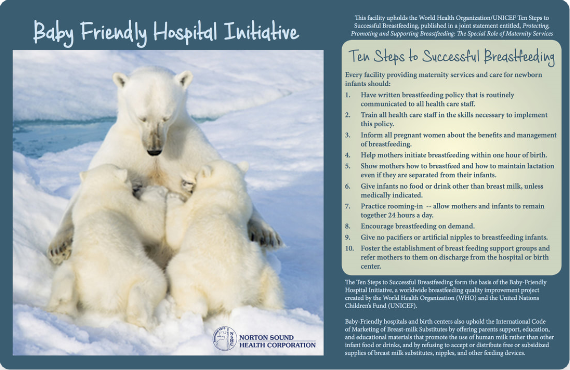

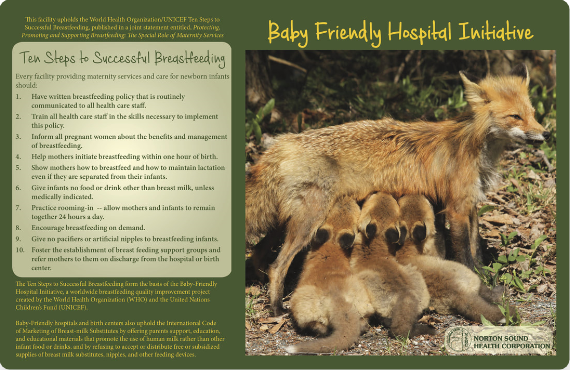
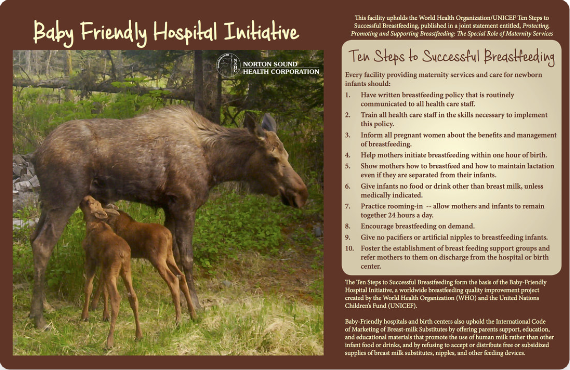
VIDEO RESOURCES
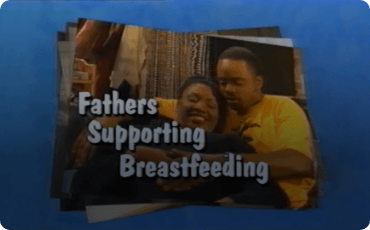
Male Breastfeeding Support
“This video was presented by Dr.
Yvonne Bronner at the 2012
Breastfeeding Summit: Reclaiming
an African American Tradition.
It depicts the male perspective on
breastfeeding and educates men
about breastfeeding in a culturally
competent form.”
Uploaded by Reaching Our Sisters
Everywhere (ROSE).
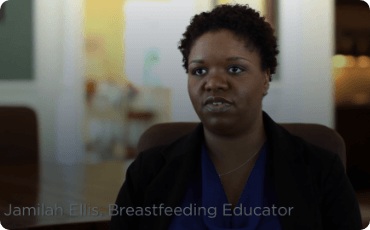
Daddy Duty
“Breastfeeding isn’t a “moms only”
gig. There are many meaningful
ways dad can be there for mom and
baby during nursing.”
Uploaded by Office on Women’s
Health.
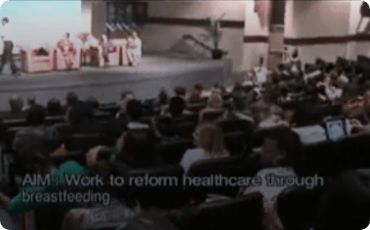
2012 Reclaiming An African
American Tradition by ROSE
“An overview of the 2012
Breastfeeding Summit: Reclaiming
An African American Tradition!”
Uploaded by Reaching Our Sisters
Everywhere (ROSE).
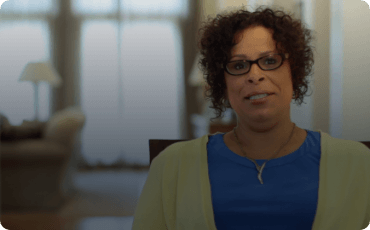
Breastfeeding and Going Back to Work
”Breastfeeding doesn’t have to stop because you have to go back to work. See how other women planned for their return to work and made arrangements with their employers.”
Uploaded by the Office on Women’s Health.

Close to the Heart: Breastfeeding Our Children, Honoring Our Values
“This video promotes breastfeeding for Native American women, highlights benefits for babies and mothers, and provides options for moms returning to work or school after a baby’s birth. It features Native families sharing their experience of breastfeeding and providers discussing the health benefits including a focus on diabetes prevention.”
Uploaded by NativeBreastfeeding.
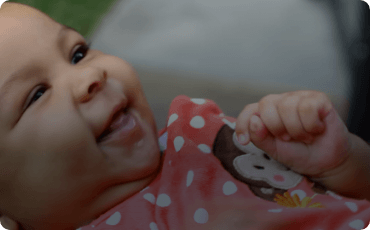
Overcoming Breastfeeding Challenges
”Find out what women wish they knew before they started breastfeeding and how to work through those new-to-breastfeeding jitters.”
Uploaded by the Office on Women’s Health.

Skin-to-Skin C-section
”Post-Cesarean section skin-to-skin contact of mother and child.” The skin-to-skin contact begins one minute into the video.
Uploaded by Abraham L Pavon.
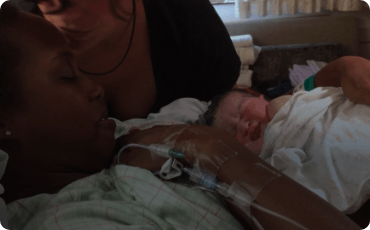
A Mother's Touch: Breastfeeding in the First Hour
”Ideally, the baby will attach to the mother’s breast and begin to nurse and remove colostrum without assistance, but if the baby is born prematurely or is unwell, the mother may need to do this herself. Even those who have lots of experience with breastfeeding may be surprised to see how much colostrum can be expressed within the first post-partum hour. It is indeed a golden hour for breastfeeding mothers!”
Copyright to Dr. Jane Morton.

Early Hand Expression: Increases Later Milk Production
”Until recently hand expression of milk has been an under-utilized skill in our institution. But there are many benefits of knowing how to express milk from the breast without the use of expensive or cumbersome pumps. In this video, Dr. Jane Morton demonstrates how easily hand expression can be taught to mothers.”
Click here for a short 1-minute overview of the above video.
Copyright to Dr. Jane Morton.
REGIONAL RESOURCES

MOTHER'S MILK BANK OF MISSISSIPPI
Mother’s Milk Bank of Mississippi (MMBM) is Mississippi’s only accredited HMBANA milk bank. Medically supported and professionally staffed, the MMBM processes, stores, and dispenses human breast milk for Mississippians. MMBM is a non-profit effort supported by volunteers.
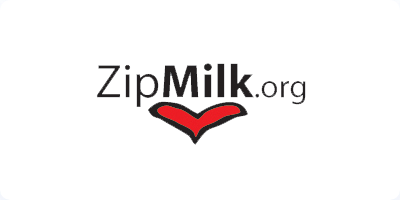
ZIPMILK
ZipMilk.org is a site that provides listings for breastfeeding resources sorted by ZIP Code. It is designed for use by consumers interested in help or support for breastfeeding, as well as by providers who want to give their clients access to such resources. The data provided by ZipMilk is collected and maintained by state breastfeeding coalitions and other organizations, which are responsible for the state-specific listings on the site.
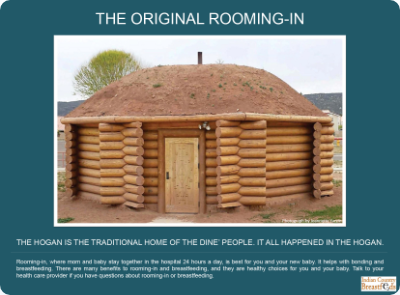
THE ORIGINAL ROOMING-IN
“The hogan is the traditional home of the Dine’ people. It all happened in the hogan.”
Rooming-in, where mom and baby stay together in the hospital 24 hours a day, is best for you and your new baby. It helps with bonding and breastfeeding. There are many benefits to rooming-in and breastfeeding, and they are healthy choices for you and your baby. Talk to your health care provider if you have questions about rooming-in or breastfeeding.”
This poster was designed for Tribal hospitals in Navajo Nation.


